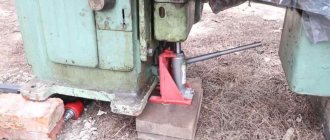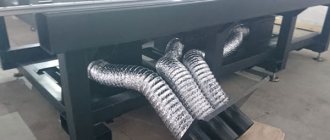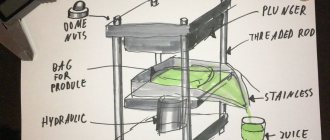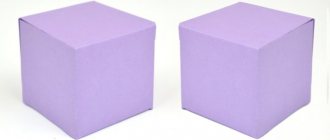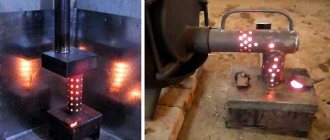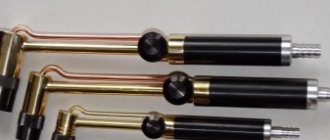Brief overview of equipment for crushing grapes
Typically the device consists of a frame, a juice tray, a cylindrical container for raw materials, a filter, and a mechanical or mechanized squeezing device.
So, currently there are several types of presses:
- Mechanical manual. The design is quite simple, which allows you to independently manage the processing and pressing process.
- Mechanized with electric drive. Working with such a press is easy. I'm pleased with the performance and ease of control.
Among hand presses, there are 2 main types:
- Jacking type of equipment. The jack lever must be operated manually, raising and lowering it. To regulate the pressure on the pulp, additional bars are placed. The material is environmentally friendly;
- Screw wine press. The juice is squeezed out by rotating the screw handle, the rotational motion of which is transmitted to the rollers. Such designs are popular among winemakers.
Winemaking equipment for pressing grapes has a fairly simple principle of operation. The berry is placed in the housing, pressed on top by a working surface with a screw, the rotational movements of which continue until all the liquid comes out of the raw material. Next, the cake obtained during the pressing process is removed and, if necessary, reused.
Mechanized equipment is divided into two types:
- A hydraulic press that works under the influence of injection of working fluid into the chamber. As a result, pressure is created, with the help of which the juice is squeezed out of the berries/fruits.
- A pneumatic press is a mechanism where air exerts pressure on the working surface for pressing.
Types of designs: diagrams and drawings
The main thing in the press is a solid base and working mechanism.
Operating principle of the device:
- prepared raw materials for pressing (chopped apples) are placed in fabric bags layer by layer through drainage grids;
- With the help of a mechanism, pressure is lowered from above and presses the juice.
A good press squeezes out 65-70% of the juice, leaving an almost dry pulp. It’s quite possible to make one with your own hands.
Homemade press designs differ in the operating principle of the main mechanism:
- Screw.
- Based on the jack: mechanical and hydraulic.
- Combined.
In the bulk of structures, pressure is exerted from above, but in the combined version, compression occurs in two directions: using a screw mechanism at the top and a hydraulic jack at the bottom.
The juice press consists of the following parts:
- stable bed;
- a quadrangular or cylindrical body, inside of which bags of chopped apples are folded;
- wooden lattices with which the bags are placed so that they do not spread out;
- piston-pressure, directly exerting pressure on the cake;
- jack support;
- working mechanism: screw with handle, mechanical or hydraulic jack;
- bowl-tray
The main body can be:
single perforated: juice will flow through the holes along the walls and through the bottom into the tray;
Screw apple press with single perforated body
- double: a solid casing with a slightly larger diameter is placed on a perforated metal cylinder;
- in the form of a solid metal body with one drain hole at the bottom;
- assembled from wooden slats connected with hoops - a barrel. The walls serve as a drainage grid.
Screw press for apples with a body made of wooden slats There may be no body at all - just a pyramid of wooden lattice frames in a tray with a mouth at the bottom, under which a container for juice is placed.
Hydraulic Frame Press
This design is easy and quick to install. For the bottom plate, you can take a piece of countertop, for example.
Types of grape squeezer: which one to choose
Absolutely all presses are made from environmentally friendly materials, without the use of chemicals for joining or processing parts. In this regard, there are two options for the material from which the press is designed: wood and metal. Devices are also classified by power and volume. Depending on the relevant characteristics required for crop processing, farmers choose one or another machine.
How to build trellises for grapes is described in this material.
Wooden: oak, apple, beech, linden, ash
In a wooden press, absolutely all the parts are made of natural material; as a rule, hard varieties are taken for production: apple, oak, linden, beech or ash. These presses require careful care and drying after each use. This is due to the fact that bacteria accumulate in the pores, which can adversely affect freshly prepared juice.
Before each use, farmers inspect the basket for damage to its integrity, the appearance of mold or other growths. And only after that he gets to work.
Homemade metal appliances: stainless steel, cast iron
For metal structures, choose non-corrosive metal: cast iron or stainless steel. These materials do not oxidize and, accordingly, do not react with aggressive juice due to the large amount of vitamin C and do not change the properties of the drink.
Such presses are durable and odor-neutral. They are produced in two formats: industrial use and household.
By volume and power (industrial, household)
Differences in power and volumes do not depend on the purpose of the press (domestic or industrial). Devices with a reinforced motor are successfully used both in private farms with large output and in factories.
Pressing units vary in volume, ranging from 1 liter of loading to 80 kg.
Step-by-step instruction
All the necessary materials have been purchased and prepared, a set of tools is at hand - you can get to work. Don't forget to take the drawing you made earlier, which will be easier to navigate. So let's get started:
- We make a loading hopper from oak boards, which is shaped like an inverted truncated pyramid.
- We take a roller and draw 6 longitudinal lines on it. Along the length of each line we drill holes with a diameter of 10 mm and a depth of 50 mm. The distances between the holes should be about 50 mm. We repeat a similar procedure with the second roller.
- We make a wooden frame from the beams, in the center of which we attach the rollers. Don't forget to leave a gap of 2-3 mm between the rollers.
- On the outside of the frame we install the gears on the gear shafts.
- We assemble the entire structure. On the reservoir for collecting pulp we fix a frame with rollers, on which we install a loading hopper on top.
- We attach a handle to one of the axes of the rollers, which will operate our device.
The most primitive crusher for processing grape harvest is ready for use.
Making a wine juicer with your own hands
The press is quite simple in nature, especially when it comes to the screw format. At home, it can be made almost from scrap materials.
- 2 pipes with a diameter of 18 or 25 mm in cross-section are welded to a metal profile in the shape of the letter P. Its height is arbitrary, but selected in such a way that the key nut on the screw fits freely.
- A compression mechanism is welded at the bottom, which will fix the required position. A clamp will help attach the finished press to a horizontal working surface.
- The frame is made from bars 5*10 mm or 4*10 mm and approximately 70 cm long.
- The width of the device depends on the length of the grooved rollers. It is best to count on a dimension of 20 cm, while the rollers and bars should protrude at the same distance, and the depth of the grooves should be at least 2.5 cm.
- The structure is directed helically with a shift of 2 cm to the rollers and secured every 10 cm to the frame using a bearing.
In addition to the main part, which crushes the berries, you need a ladle or bucket with a narrowed base. It is also installed on the frame, at a distance of 1 cm or more from the pressing mechanism.
A container for liquid is attached below and the process can begin. Thanks to the gaps between the rollers, the seeds slip into the filter compartment intact, so the drink turns out sweet, rich and without bitterness. Is it possible to eat grapes with seeds? This link will tell you.
The basket can also be made of metal. In this case, stainless steel gaskets are used to separate the juice into portions.
Materials for a drum press machine according to Italian drawings
Before you start work, you should understand what materials will be useful for the future press according to an Italian or other drawing. They need to be placed all at once on the desktop to speed up the design process.
- wooden beams 4*10 mm or 5*10 mm;
- rolls;
- 2 mm stainless steel discs;
- pipes with a diameter of about 25 mm;
- U-shaped profile;
- fastening tool, welding machine;
- bearings.
Grape presses: rules for selection and self-production
And, of course, before pressing the juice, it was necessary to wash it thoroughly.
We asked the seller what the press is smeared with and what is the best way to wash it off, since we want to use it to obtain a food product. The seller replied that he himself probably did not know what kind of lubricant was used. For cleaning, I advised taking “Galosha” technical gasoline for degreasing, “Fairy” type dishwashing detergent and alcohol.
We didn’t take risks with gasoline; we were afraid that it would be difficult to wash later, so we washed it right away with Fairy, and then with industrial alcohol. The most difficult thing was to wash the threads on the press, which can only be done with a fine brush.
Washed and dried. Carefully secured it to the table. And they started squeezing the juice.And since we did not have instructions for its use, and, unfortunately, the Internet was not “at hand,” we mastered the nuances in practice.
The first problem was that the piston came off the press; it took a long time and with difficulty to strengthen it, because the hole in the piston for attaching it to the press was not centered. And how they put him on the press in the first place is unclear. The second problem is to secure it so that the press does not move during operation and does not fall. By the way, it weighs more than 10 kg. The cutouts for the bolts on the base are very small.Well, these problems have been solved. We drilled a hole in the center of the piston and secured it to the press. We attached the press to the table, placing washers under the screws. True, they had to make holes in the table, but they didn’t come up with another option.
And they began to squeeze the juice from the grapes.The effort, as it turned out, needs to be made unfeminine. At the same time, juice splashes through the holes in the press cylinder when the grapes are crushed, and even grape seeds shoot out, falling into the pan with juice.
As we found out later, to prevent this from happening, you need to put the grapes in a canvas bag and then squeeze the juice out of it.
Lowering the piston to the very end, when the handle of the press touches the body, you realize that this is not the very bottom. That is, what remains is a “pancake” of grapes 4.5 cm high. And in these 4.5 cm there are even whole berries. And there is a lot of juice left. We tried to take this “pancake” apart with our hands and squeeze it out again. But even after the second squeeze, we simply squeezed out another half liter of juice with our hands, wrapping the remains in gauze.The press could not stay on the screws and came off after some time. I had to re-screw it and make more holes in the table.
And since we pressed the juice on the street, about three dozen bees flocked. I had to stop and clean everything up. We continued when the bees lost interest in us. Again, not for long.
But in the end they came to the conclusion that if you adapt and take into account all the features, you can press the juice quickly and of good quality. And make a grape juice press your good friend.
In what cases is a crusher used, how to make it yourself?
It is necessary to leave a gap between the rollers of the crusher, otherwise the seeds will be crushed along with the berries and lead to excessive astringency of the juice.
Assembling the crusher yourself is not difficult. Any production begins with a drawing. The Internet will help you find the image of the crushing structure you like. And you can make it if you find all the elements:
- Oak boards.
- Two rollers.
- Two identical gears.
- Bars for frame size 50x50.
- Lever.
- The reservoir into which the pulp is loaded.
The loading hopper is made of oak wood in the form of an inverted pyramid.
You need to draw 6 lines on the roller. Drill holes along the length of each with a diameter of 10 mm and a depth of 50 mm at a distance of 50 mm.
Gears are installed on the outside.
The frame together with the rollers is mounted on the pulp reservoir. A bunker is installed on top.
A handle is placed on the axis of one of the rolls, and when rotated, the mechanism begins to move.
Instructions and drawings on how to do it yourself at home
Do-it-yourself stone fence: step-by-step process with explanations of how to make a fence
To crush a small crop (up to 500 kilograms), it is enough to build a wooden crusher with your own hands according to the proposed drawing. Its production consists of the following stages:
- Knock down the bottom frame from the boards. Its parameters depend on the number of rollers and the size of the lower bunker.
- Prepare the rolls. They can be purchased at a ready-made parts store.
- Make a bunker for berries from the boards. It should expand from above for ease of loading raw materials.
- To rotate the rollers, 2 metal gears are needed.
- Install the rollers using metal pins. Secure on the outside with gears.
- Select a container for ready-made pulp and juice. The size of the upper part depends on the frame parameters.
After this, the final assembly begins. A support frame with rollers and an upper hopper are attached to the container with the mixture. A handle is attached to one of the roller axes. With its help, the crusher is set in motion. All parts are coated with colorless wood varnish. It must be non-toxic and safe.
Containers for must and wine
The first thing you need to start equipping a home distillery is purchasing containers in which the wort will ferment, as well as strain and store the wine. It can be:
- Glass bottles,
- Oak barrels and tubs,
- Stainless steel tanks.
Regarding the use of plastic containers and utensils made of other metals for wine production, you need to take into account that wine alcohol tends to acquire the taste of the material from which the container for storing it is made.
Raw material grinding
For this operation there are special crushers for grapes and fruits. These devices can
be
- Manual - for delicate chopping of small volumes of fruits,
- Mechanical - for intensive work and speeding up the process.
Grape crushers can be equipped with a destemmer to separate the branches (ridges) from the grapes.
Pulp pressing
No home wine production can do without separating the juice from the pulp. A press can handle this operation perfectly; it can be manual or mechanical.
- A manual press is a basket for pressed mass with holes, equipped with a mechanical head with handles.
- A mechanical (hydraulic) press is a basket for crushed pulp with a membrane in the center that expands when it is filled with air.
Under the basket of any press there is a tray with a spout for draining the squeezed liquid. After collecting the valuable juice by gravity, the remaining mass is pressed until it is completely squeezed out.
Fermentation and filtration
Wine in fermentation containers should not come into contact with oxygen. Special fermentation tanks
for wort they must be equipped with water seals. They allow carbon dioxide to be removed and protect the wort from air, and also allow you to control the end of the fermentation process. Hydrometers are used to measure the alcohol content of young wine.
Fermentation is followed by a stage of filtration and removal from sediment. The purpose of this stage is to separate the wine from the yeast that has sunk to the bottom of the container, so as not to degrade its quality. For this purpose, such equipment for wine as a filter press equipped with a pump has been created. Passing through the filter board of this apparatus, the wine is cleaned of colloids, microorganisms, mechanical and adsorption particles. The device is equipped with a pressure gauge that controls the fluid pressure. After such filtration, the wine becomes significantly brighter.
Maturing and capping wine
Aging young wine gives it a special taste and aroma, especially if it takes place in oak barrels. Tannins and oak tannins add a unique accent to the overall bouquet of the drink. If the maturation of wine is planned to be carried out directly in bottles, then in-line and vacuum bottling machines have been created for the production of the drink. Their advantage is that during bottling, the contact of the drink with oxygen is minimized, which guarantees its quality.
It is convenient to cap bottles using a special device for securely placing the cork in the neck. These devices, mechanisms and devices greatly facilitate the work of a winemaker in preparing wine at home.
Attention, TODAY only!
How to make a grape press with your own hands video
Home and family How to make toys for a parrot with your own hands: a review of ideas, master classes and recommendations
Anyone who has a parrot knows firsthand how restless and inquisitive these colorful birds are.
That is why it is very important to come up with as many interesting activities for them as possible. If you don't do this, oh...
Home and family How to make aquarium decor with your own hands
Aquariums are a very exciting business. It happens that people limit themselves to a modest aquarium and a couple of goldfish. However, more often than not, silent pets take up more and more of our time. The aquarium is gradually...
Home and family How to make a knife case with your own hands?
Many hunters know that putting a knife away is much more difficult than removing it. Therefore, most of them take a very responsible approach to choosing a sheath. However, some beginners do not know how to choose the right knife sheath...
Home and family Walking ball for a hamster. How to make a ball for a hamster with your own hands?
Hamsters are very active and inquisitive pets, so the space of one cage is not enough for them to live a full life. In order for the dzhungarik not to gain excess weight, to be active and not to get bored, he needs various...
We bought it in Ukraine, according to an advertisement. It is popularly called a grape press. For ourselves, we defined it as a press for obtaining juice from grapes, or simply a press for grapes. The advertisement for the sale of the press was given by a man who, in Soviet times, did his own tinkering at the factory, like many in those days.
| The design is simple: a hand press, a stainless steel cylinder with holes and a tray with a groove through which the juice flows. |
| True, the press and cylinder turned out to be fairly smeared with some kind of technical lubricant - either grease or something else. |
Working principle of a grape crusher
Provides 3 technological operations at once:
- separation of juice from the cake through crushing the berries;
- thorough cleaning of twigs and seeds;
- if necessary, separating other parts of the plant.
Such a unit will be useful in a personal plot for making wine from grapes at home. Regardless of the type, the unit consists of the following components:
- receiving hopper (the product is loaded into it);
- movable rollers of various shapes or a rotor (carry out the process of squeezing juice and producing grounds);
The berries are crushed by rollers, the juice and cake end up in a container for the finished raw materials.
A separate category includes destemming presses: roller or impact-centrifugal. They produce additional peeling from grape combs. These parts of the bunch are also needed because they add a hint of brightness and astringency to the finished wine. For the production of red wine varieties, such as Moldavian and Monarch, the use of pulp with ridges is allowed. Read about the Moldavian wine grape variety here. When making white wines, such impurities are not allowed; you will need a type with a separator for enhanced purification.
Read about Monarch wine grapes in this material.
DIY juice presses
It is quite possible to make a juice press with your own hands, the main thing is to find operating diagrams and drawings of such homemade products, which will not be difficult. Many of those home craftsmen who already have experience in making such equipment are happy to share photos of their devices and even videos showing the process of their manufacture and the principle of operation in detail.
Homemade juice presses
Most often they try to make screw-type presses with their own hands. Meanwhile, it should be borne in mind that it will not be possible to make a powerful screw for such a device without the involvement of a qualified turner. You can make a homemade press without third-party specialists if you replace the screw mechanism with a conventional jack (mechanical or hydraulic), which is in the arsenal of every car enthusiast.
Drawing of a press based on a car jack
The main supporting element of a homemade juice press is the frame
Its strength should be given special attention. To make such a frame into which the jack will rest and create the required pressure, you can use a square metal pipe with a cross-section of 40x40 and a wall thickness of at least 3 mm
When calculating the height of the frame of your homemade press, you should take into account the total thickness of the drainage grids, pads and bags of raw materials, as well as the height of the jack. The width of the frame can be chosen arbitrarily - the main thing is that a storage tray for collecting the squeezed juice is placed in the opening created.
The jack can simply be placed on the piston or rigidly attached to the top crossbar
When creating a press for apples or grapes with your own hands, you should pay special attention to its stability. To effectively solve this problem, three pieces of square pipe can be welded to the bottom of the frame, which will act as legs and ensure the stability of the unit
A stand made of boards or wood boards is placed on the top of the legs, on which the pallet will be placed.
Drainage grates, complete with which your apple, grape or any other press will work, should be made only from hardwood (oak or beech). The thickness of the planks from which such gratings will be made must be at least 20 mm.
The bags in which apple pulp or other raw materials for squeezing juice will be placed can be made from various fabrics (the main thing is that such fabric is highly durable and the bags that are sewn from it do not rupture under the influence of high pressure created by the jack). As such fabrics, in particular, you can use ordinary burlap, jute, cotton and linen fabrics, chintz and synthetic materials.
A tank from an old washing machine is quite suitable as a frame holding wooden slats.
You can make an apple press with your own hands or a squeezing device for processing other raw materials using an even more complex design scheme, which involves the simultaneous use of both a jack and a screw mechanism. The latter in such a press is used to fix the fruit or berry mass, which is placed in a perforated casing made of stainless steel.
The mechanism that creates the required pressure is a jack, which is installed in the lower part of the frame structure of the press. With its upper foot, the jack rests on the lower part of the support platform, which can move along the side guides of the press frame. Thus, when the jack is raised, the support platform also rises, moving towards the piston, which is equipped with the lower part of the screw.
Screw press with jack
Thus, it is quite possible to independently manufacture an effective press for producing apple, grape and even pomegranate juice, and this does not require significant financial costs, special knowledge, skills or the ability to handle complex equipment.
The need to make an apple press with your own hands arises during the season of abundant fruit harvest. Using this device, you can produce natural juice both for consumption at home and for sale. In addition, some alcoholic drinks are made from apple juice. If it is necessary to squeeze out a small amount of fruit, a homemade device is often used.
Read also: How to dilute boric acid for spraying tomatoes
Recommendations for obtaining high-quality juice from berries
One of the main recommendations for working with a press is the need to wash the berries before loading. Only after removing them from the bunch and thoroughly washing them in running water, the material is loaded into the apparatus (drum).
Winemakers who are professionally involved in grape cultivation divide it into 2 levels:
- fruit juice obtained by gravity;
- using a press.
In the first case, the liquid is the most valuable, as it is rich in taste and useful substances. In the second option, you can squeeze out the juice in 2 stages, that is, recycle the pulp. For varieties such as Chardonnay, white Muscat, Pinot Noir, secondary processing is not recommended, since the taste characteristics are significantly affected.
Rules of application
How to make crushed stone paths at your dacha with your own hands, choice of material and technology
After manufacturing, the press can be placed and secured to any support. Before use, the grape crusher must be placed on a flat surface and secured well.
The manual crusher must be installed on a container to collect pulp. To do this, you can use barrels or tanks made of plastic or stainless steel. To obtain juice, berries are loaded into the loading ladle. From there they are poured onto windrows. A strong napkin must be placed at the bottom of the basket, from which the pulp is then removed.
When rotated, the berries are crushed and then turned into a mass like a puree, from which juice comes out. Before loading the berries into the receiving bucket, they are removed from the bunch and washed well. There is no need to remove the skin from the berries; thanks to it, the juice has a pleasant aroma.
We bought it in Ukraine, according to an advertisement. It is popularly called a grape press. For ourselves, we defined it as a press for obtaining juice from grapes, or simply a press for grapes. The advertisement for the sale of the press was given by a man who, in Soviet times, did his own tinkering at the factory, like many in those days.
| The design is simple: a hand press, a stainless steel cylinder with holes and a tray with a groove through which the juice flows. |
| True, the press and cylinder turned out to be fairly smeared with some kind of technical lubricant - either grease or something else. And, of course, before pressing the juice, it was necessary to wash it thoroughly. We asked the seller what the press was smeared with and how best to wash it off, since we want to use it to obtain a food product. The seller replied that he himself probably did not know what kind of lubricant was used. For cleaning, I advised taking “Galosha” technical gasoline for degreasing, “Fairy” type dishwashing detergent and alcohol. We didn’t take risks with gasoline; we were afraid that it would be difficult to wash later, so we washed it right away with Fairy, and then with industrial alcohol. The most difficult thing was to wash the threads on the press, which can only be done with a fine brush. |
| Washed and dried. Carefully secured it to the table. And they started squeezing the juice. And since we did not have instructions for its use, and, unfortunately, the Internet was not “at hand,” we mastered the nuances in practice. |
| The first problem was that the piston came off the press; it took a long time and with difficulty to strengthen it, because the hole in the piston for attaching it to the press was not centered. And how they put him on the press in the first place is unclear. |
| The second problem is to secure it so that the press does not move during operation and does not fall. By the way, it weighs more than 10 kg. The cutouts for the bolts on the base are very small. Well, these problems have been solved. We drilled a hole in the center of the piston and secured it to the press. We attached the press to the table, placing washers under the screws. True, they had to make holes in the table, but they didn’t come up with another option. |
| And they began to squeeze the juice from the grapes. The effort, as it turned out, needs to be made unfeminine. At the same time, juice splashes through the holes in the press cylinder when the grapes are crushed, and even grape seeds shoot out, falling into the pan with juice. As we found out later, to prevent this from happening, you need to put the grapes in a canvas bag and then squeeze the juice out of it. |
| Lowering the piston to the very end, when the handle of the press touches the body, you realize that this is not the very bottom. That is, what remains is a “pancake” of grapes 4.5 cm high. And in these 4.5 cm there are even whole berries. |
Advantages and disadvantages
A press juicer greatly facilitates the processing of grapes and other soft berries. The unit has the following advantages:
- simple design;
- low noise level during operation;
- obtaining the maximum amount of high-quality juice or must, thanks to the features of the unit, which allows you not to crush the skins, ridges, and seeds of grapes;
- processing of various berries and fruits by adjusting the gaps in the pressing element;
- no foaming;
- accelerating the process of squeezing juice, reducing labor intensity.
There are only two shortcomings in the operation of the device: leaky design, due to which the juice comes into contact with the environment; the possibility of mold formation due to insufficient cleaning and drying of the press after spinning.
Types of presses
Also check out these articles
- Zucchini Iskander F1
- Vidnaya pear variety
- What can you give to rabbits?
- The benefits and harms of pears
There are different types of juice press. To understand which option is best suited in a particular case, you need to familiarize yourself with them.
Screw press
Screw presses, also mechanical, are designed for squeezing juice from all kinds of fruits. The principle of operation is squeezing the raw material using a screw to obtain juice. There are two types of this hand press.
- A press with a screw coming from the base is a budget option. The advantage of this model is efficiency. But, during operation, the screw comes into contact with the juice, which is why the lubricant gets into the juice and its taste and quality deteriorate. If the screw is not lubricated, it often begins to creak and jam. In addition, in similar, cheap press options, the juice tray is of poor quality and after a few years begins to rust or break.
- Frame screw press is the second option, in which the screw is located on top. During operation, it rests against the pad on the press piston, so contact with juice is excluded and grease from the screw does not get into the drink. They get a lot of juice at a time, but the problem is that such a manual press requires a lot of physical effort. The most popular are small models with a volume of up to 5 liters.
Important! When working with a press, you need to gradually increase the pressure, otherwise solid waste from the fruit may get into the juice.
Screw presses are in great demand due to their budget price, but their quality cannot be called the best. They break quickly, the screw without lubrication can creak, but they do their job perfectly.
Photo of Hydraulic Press
Hydraulic Press
This type of press is used for squeezing juice from apples, carrots, currants, grapes and other fruits, vegetables, and berries. The hydraulic press is more practical to use and also comes in two types.
Jack press
Such a device attracts attention with a rectangular or square frame, with a stop for the jack rod. The jack is always located centrally at the top or bottom of the structure
Using a jack is very simple; both men and women can do this kind of work, because much less effort is required. The main problem is that the jack rod is usually not enough to cover the entire height of the basket. And in order to squeeze out all the juice, you have to place wooden blocks during work.
Interesting! To avoid placing blocks while working with a hydraulic jack press, you can buy a two-stage jack.
- A press with a hydraulic cylinder can be semi-automatic (electric) or manual. The semi-automatic model is powered by electricity and is started by pressing a button, but the raw materials are always loaded manually. Most often used in industry. Such devices are suitable for squeezing the juice of pomegranates, pears, herbs, pineapple, etc. The press frame has a hydraulic cylinder and a pump that supplies oil to the cylinder. The volume of baskets for models on the market ranges from 50 to 200 liters.
Hydraulic presses are not cheap, and while models with a jack are often purchased for home needs, a press with a hydraulic cylinder is used only in enterprises selling freshly squeezed juices.
Photo of the Combination Press
Combination presses
Suitable for squeezing juice from apples, grapes and other berries, vegetables and fruits. These models have both a screw and a hydraulic jack. The first spin uses a screw, and the second uses a jack. Such a device greatly simplifies spinning and speeds up the process, but it is not cheap.
Belt press for juice extraction
These are automatic models of presses that are used in large industries. They are installed on juice production lines and operate automatically. Their effectiveness is high, but they cannot be used in everyday life.
Hydropress
This is a semi-automatic device. This design uses water pressure in the water supply. When the fruit is poured into the raw material basket, it is covered with a lid. In the middle of the basket there is a rubber membrane that expands under water pressure and squeezes out the juice.
This type of press works well. Basket volumes range from 20 to 200 liters, but despite this, such mechanisms are much more expensive than screw or hydraulic ones. Only if the drink is produced for sale will the device be able to recoup its cost. In addition to the price, you need to take into account the fact that the rubber membrane sometimes breaks and has to be replaced. And for the device to work, you need a water supply with a pressure of 2-3 atmospheres.
Photo of Belt Press
Classification
The grape press must be made from environmentally friendly materials. In this regard, only wood and steel are used for the production of units. In addition, devices for pressing juice are classified according to their method of operation, design, and performance.
By way of working
Depending on the type of power supply and method of operation, the following types of equipment are used:
- mechanical and manual grape press - suitable for use in private households, you can do it yourself, but squeezing requires physical effort;
- electric unit - can be screw, pneumatic or hydraulic, characterized by high productivity, low physical labor costs, but expensive (about 30 thousand rubles);
- universal press - the peculiarity is that it can process any vegetables, berries and fruits; such a device operates from the mains.
Electric
Universal
Manual
By material
Equipment for pressing grapes is made of wood or metal:
- Press with a wooden barrel or basket. If it is possible to make a wine press with your own hands, then linden, beech or oak should be used as the material for the basket. These types of wood are durable, dry quickly, and do not crack or warp when dried.
- Metal unit. Structural elements are made of stainless steel, which increases the cost. This press is durable, hygienic, easy to clean and maintain. The contact of grapes with the working elements of the press does not add extraneous odors to the juice.
Made of metal
Made of wood
By volume and power
The productivity of the press is determined by its type, the power of the electric motor and the volume of processed raw materials.
- High-performance units – continuous electric screw presses. They can squeeze up to 5 tons of grapes per hour, their dimensions are: length - 2.2 m, width - 1 m, height - 1.5 m. Motor power 2.2 kW. Such equipment is appropriate for industrial enterprises or winegrowing farms with large volumes of processed material.
- Hydraulic and pneumatic presses are intermittent units. Productivity reaches up to 40 liters of juice from one bookmark. They are used if you plan to make wine regularly or organize craft production.
- For small volumes in the household, it is advisable to use a self-assembled screw grape press. Its performance is determined by individual needs. Devices with basket volumes from 2.5 to 25 liters are manufactured industrially, allowing you to get from 1 to 25 liters of juice in one batch, respectively.
By design
According to their design features, presses are divided into:
- Screw presses are mechanical presses for squeezing grapes with your own hands. The working container is a wooden basket or a perforated metal barrel, into which crushed pulp or whole grapes are placed. The spinning process is carried out by rotating the handle of a pressing element mounted on a screw auger or rod. Screw presses are simple and trouble-free; productivity depends on the size of the basket.
- Jacking – pressing is carried out using a piston (jack). It can be fixed from above, the pressing force, in this case, is supplied to the pressure plate. If the jack is secured from below, then the basket rises to the fixed pressure plate. In either case, the grapes are compressed between the bottom of the basket and the plate. It is convenient to work with such a press without exerting significant physical effort. They are manual, hydraulic or pneumatic.
- Screw - divided into manual and electric. The principle of operation is similar to a meat grinder and lies in the fact that, thanks to the auger, the pulp is mixed relative to the drainage perforated surface and is subjected to active mechanical action. This treatment can crush the seeds and grind the skins of the grapes. Phenolic and nitrogenous substances pass into the wort. A suspension may form in it.
- Lever ones are the most primitive type. A bag of grapes will be placed between the board and the lever hinged to it. Due to the force applied to the lever, the berries are squeezed between the pressing surfaces. Such presses are leaky, labor-intensive, and low-productive compared to jacking and screw machines.
Lever
Jacking
Screw
Screw
Tips for use
The quality of the resulting juice depends on how the grape press is made and how it is operated.
Before starting work, the grapes must be washed, sorted, and the berries separated from the bunches; they do not need to be peeled. It gives juice and wine a pleasant bouquet. Raw materials for pressing:
- whole berries, used for juice production;
- pulp, allows you to fully reveal the aroma of grapes, recommended for obtaining wine materials.
Sequence of actions when working with the press:
- Fix the device motionless on a horizontal, flat surface to avoid displacement.
- Prepare a container for collecting the pulp. This could be a bucket, tank, pan.
- Place a container under the outlet hose or chute into which the juice will drain.
- Place a plastic bag over the piston plate to prevent the piston from rubbing against solid pulp particles. Rotate the handle to set the screw to the top position.
- Cover the inner surface of the press basket with a clean, cold-water-washed, white, coarsely woven cloth (you can use material from flour or sugar sacks). The edges of the fabric should hang over the sides of the basket. This will make it easier to remove the pulp.
- Place pulp or berries in the basket, cover with the hanging corners of the fabric. Place the basket under the piston.
- Tighten the press screw until juice appears. Slowly turn the screw with the handle until significant resistance is felt.
- Stop the rotation of the screw. After a break of 30-60 seconds, start turning the screw again. This technology allows you to most fully open the cell membranes of grapes.
- After the juice stops flowing, use the handle to turn the screw to the top position.
- To better squeeze the grapes, repeat the process of rotating and stopping the screw 2-3 times.
- After the spin is completed, the press screw should be returned to its original position, turning it in the opposite direction.
- Remove the contents of the fabric from the basket. Transfer the pulp into a previously prepared container. Add a small amount of water so that it covers the cake by 1-2 cm. After 3-4 hours, warm the mixture to 65 degrees. This will allow you to extract as much juice as possible. Spin again. It is not recommended to squeeze the pulp more than three times; this leads to the accumulation of suspension in the wort.
- After completing the process, disassemble the device, clean all parts, rinse well, wipe and dry. To wash the basket, regardless of whether it is made of wood or metal, synthetic detergents should not be used. You can use soda or table salt.
- The press should be stored in a dry, ventilated area.
If a wooden basket becomes moldy, it should be washed with cold water and thoroughly brushed. Then you can prepare a solution of sulfuric acid (100 g per 2 liters of water) and wipe the entire surface of the basket with it, using a brush or piece of cloth. After two days, rinse with lye (an aqueous solution of wood ash) to neutralize the acid, then with clean water.
Another way to get rid of mold is to coat the surface of the basket with lime. After two days, clean everything and rinse with water. Then treat the basket with sand and rinse with a solution of ammonia (3 tablespoons per 5 liters of water). If the mold is not old, you can scrape it off with a knife, then steam the basket with oak sawdust. Moldy parts of the press basket should not be washed with boiling water. This will cause the mold to eat into the wood surface.
Professional winemakers distinguish two types of juice used as wine material:
- obtained by gravity;
- isolated by pressing grapes.
Requirements for a juice press when making wine at home
All types of juicers are practical and have their own advantages. Your choice should depend on preferences, harvest volume and financial capabilities.
In addition to the principle of operation of the device, it is important to choose the right materials from which the equipment is made
Environmentally friendly materials for the manufacture of presses are the key to long service life and a high-quality final product (juice). Stainless steel will ensure long years of operation for the device. This is a reliable metal that does not corrode, which means it will not only last a long time, but also will not spoil the juice, which can be consumed in its pure form or fermented into wine. Aluminum is also a good choice. This material is capable of many years of service; one of the advantages compared to stainless steel is its low specific gravity.
A high-quality press is also made of cast iron. This material has high strength over many decades and does not lose its physical properties. The basket is made of wood. The best option is beech. The advantages of this material are naturalness, strength, durability. In addition, such a press looks very impressive and presentable.
Advantages of using the device
Advantages of producing pulp with an automatic crusher:
- fast processing of large volumes of grapes;
- rational use of resources;
- the opportunity to obtain high-quality pulp;
- automatic cleaning of cake, juice from twigs, excess ridges;
- simplicity and convenience of the unit, which can be improved if necessary;
Devices made of wood and stainless steel are popular. They are not subject to oxidation and corrosion. This ensures long-lasting use as the juice is highly acidic.
The only drawback is the inability to use certain types of units for processing nutmeg varieties.
OTHER
Maturation and aging of wine
The end of the preparation of any wine is marked by its transparency (or there is turbidity that no longer descends), which...
Wine production - what a novice winemaker should know
Experienced winemakers have their own tricks and secrets that allow them to produce tasty and aromatic homemade wine year after year...
Wine production
Video: Winemaking, wine production in Spain (part 2) wine juice Wine is a fermentation product prepared in advance…
Preparing to make wine
Preparing grape wine starter 7–8 days before the start of the grape harvest, in dry weather, selectively harvest...
Equipment for home winemaking
ContentsPreparation of raw materials for winemakingCrushing grapesPressing raw materialsFermentationUsing water seals in…
The best homemade apple wine
Fans of classical literature have often come across mentions of such a drink as...
What equipment is needed for winemaking?
What equipment is needed for winemaking and what grape varieties are suitable? Winemaking is popular in our country.…
How to make homemade wine?
Winemaking traditions, carefully preserved by humanity, date back several thousand years. Useful qualities of grape…
How best to store homemade wine
Owners of a home vineyard often face a problem: how to store homemade grape wine so that its taste...
Making dry wine
There is an opinion among people that it is impossible to make dry wine at home without adding sugar due to its low...
Making wine from rowan at home
Wine connoisseurs will appreciate the delicious homemade red rowan wine. It is characterized by a slight bitterness,…
Making cranberry wine at home
Cranberry wine retains most of the beneficial properties of this northern berry; it contains many acids, vitamins and…
Making homemade red wine
A classic of the genre is homemade red wine, a drink with centuries-old traditions of preparation and consumption. Wherever...
Choosing a container for wine fermentation
Home winemaking is impossible without special containers in which fermentation takes place. It largely depends on the capacity...
Winemaking at home
ContentsHistory of home winemakingSecrets and features of home winemakingRaw materials for winemakingEquipment…
Shaft crusher - step-by-step manufacturing instructions
A device of this type is most preferable for self-production. For this you will need:
- Oak bars 50x50 for making the frame.
- Oak boards, plywood, sheet iron or plastic for making a bunker.
- Wooden rollers - 2 pcs.
- Gears, identical in size - 2 pcs.
- Lever.
- Tank for collecting pulp.
First you need to assemble a frame from oak bars into which the rollers will be installed. The length of the frame depends on the diameter of the pulp collection tank on which such a pulper will be installed. The width of the inside of the frame should be slightly larger than the length of the bolsters.
Wooden ribbed rollers are attached inside the frame at a distance of 2–3 mm from each other, the shape of which is shown in the drawing above. Gears are installed on their axles outside. You can make rollers yourself from round-shaped blanks, such as rolling pins. One option is to use old rollers for spinning clothes from an activator-type washing machine. They need to drill six rows of holes with a diameter of 10 mm to a depth of 5 mm.
A handle is attached to one of the shafts, which sets the rollers in motion. Then a receiving hopper is installed on top. It can be made from any materials. It is made in the form of an inverse truncated pyramid. Now all that remains is to install the crusher on the pulp collection container. You need to rotate the handle in such a way that the rollers rotate towards each other, pulling the berries into the space between them and pressing them like a press.
After the homemade crushing apparatus has been assembled and tested, you can begin to improve it. For example, equip the shafts with an electric drive. To do this, you need to install a pulley instead of a handle, and use an electric motor with a belt drive to rotate it. You can connect a drill or screwdriver as a motor.
To separate the ridges, you can install an additional device called a comb separator. It is a mesh that is installed on top of the rollers. A screw mechanism is mounted above it, which is activated by rotating the roller drive handle.
The blades of this device constantly mix the mass of grapes, the berries are separated from the ridges, fall through the mesh and then fall onto the crusher shafts. You can make such a device with your own hands from stainless steel.
After each use, the crusher must be washed thoroughly to prevent mold.
